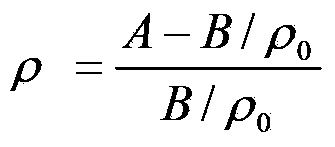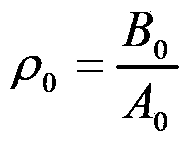Modification method and application of hydroxyapatite
A technology of modification of hydroxyapatite, which is applied in the fields of fibrous fillers, medical science, dyeing and low-molecular-weight organic compounds, etc. It can solve the problems of low hydroxyl activity, low grafting rate, and no increase in flexural strength, etc. problem, to achieve the effect of high bone conduction and simple process
- Summary
- Abstract
- Description
- Claims
- Application Information
AI Technical Summary
Problems solved by technology
Method used
Image
Examples
Embodiment 1
[0028] Take 5.0g of nano-hydroxyapatite with a particle size of 100-120nm (refer to Materials Research Bulletin48(2013)1233-1238 for the preparation method), disperse it with 100ml of N,N dimethylformamide, add 0.5g of citric acid at 120°C Heat and stir for 6 hours, filter, wash and dry, and ultrasonically disperse in 100ml of xylene for 20 minutes with an ultrasonic power of 200W, and then heat to 100°C. Take D,L-lactide 2.5g, use 25ml xylene in N 2 After heating and dissolving at 120°C under protection, add it to the xylene dispersion of nano-hydroxyapatite, then add 0.0025g stannous octoate catalyst, and continue to 2 Heating and stirring at 120° C. under protection for 6 hours. After the reaction was completed and cooled to room temperature, it was filtered, washed with dichloromethane, and dried. Take 1.0g powder and keep it in a muffle furnace at 700°C for 4h, and the measured grafting rate is 7.3%.
[0029] Take 2.0g of the above-mentioned grafted nano-hydroxyapatite...
Embodiment 2
[0031] Take 5.0g of micron hydroxyapatite with a particle size of 3-5μm, disperse it with 200ml of N,N dimethylformamide, add 3.0g of citric acid, heat and stir at 120°C for 8 hours, filter, wash and dry, and dissolve in 100ml of xylene Ultrasonic dispersion for 30 minutes, the ultrasonic power is 300W, and then heated to 100°C. Take 5.0g of L-lactide, and use 50ml xylene in N 2 After heating and dissolving at 120°C under protection, add the above-mentioned xylene dispersion of micron hydroxyapatite, then add 0.0030g stannous octoate catalyst, and continue to 2 Heating and stirring at 120° C. under protection for 8 hours. After the reaction was completed and cooled to room temperature, it was filtered, washed with dichloromethane, and dried. Take 1.0g of powder and keep it in a muffle furnace at 700°C for 4h, and the measured grafting rate is 8.5%.
[0032] Take 2.0g of the above-mentioned grafted micron hydroxyapatite, add it to poly-L-polylactic acid with a molecular weig...
Embodiment 3
[0034] Take 5.0 g of hydroxyapatite whiskers with a particle size of 10-20 μm, disperse them with 250 ml of N,N dimethylformamide, add 5.0 g of citric acid, heat and stir at 120°C for 6 hours, filter, wash and dry, and then dissolve them in 100 ml of dimethicone Ultrasonic disperse in toluene for 20 minutes, the ultrasonic power is 200W, and then heated to 100°C. Take D, L-lactide 7.5g, use 50ml xylene in N2 After heating and dissolving at 120°C under protection, add it to the xylene dispersion of the above-mentioned hydroxyapatite whiskers, then add 0.0030g of stannous octoate catalyst, and continue to 2 Heating and stirring at 120°C under protection for 10 hours. After the reaction was completed and cooled to room temperature, it was filtered, washed with dichloromethane, and dried. Take 1.0g powder and keep it in a muffle furnace at 700°C for 4h, and the measured grafting rate is 9.5%.
[0035] Take 2.0g of the above-mentioned grafted hydroxyapatite whiskers, add it to L-...
PUM
| Property | Measurement | Unit |
|---|---|---|
| Particle size | aaaaa | aaaaa |
| Bending strength | aaaaa | aaaaa |
| Particle size | aaaaa | aaaaa |
Abstract
Description
Claims
Application Information
 Login to View More
Login to View More - R&D
- Intellectual Property
- Life Sciences
- Materials
- Tech Scout
- Unparalleled Data Quality
- Higher Quality Content
- 60% Fewer Hallucinations
Browse by: Latest US Patents, China's latest patents, Technical Efficacy Thesaurus, Application Domain, Technology Topic, Popular Technical Reports.
© 2025 PatSnap. All rights reserved.Legal|Privacy policy|Modern Slavery Act Transparency Statement|Sitemap|About US| Contact US: help@patsnap.com


